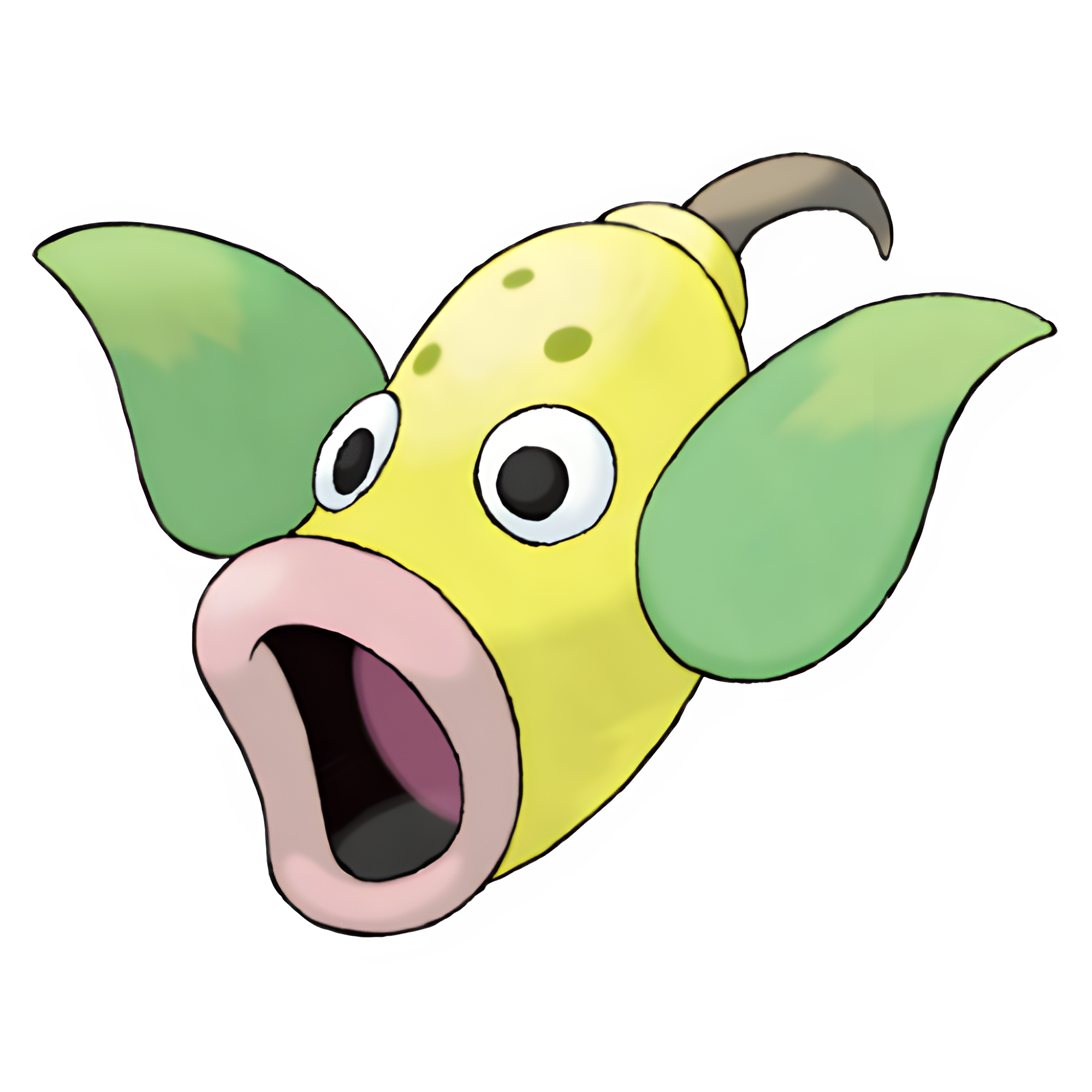Facts for Kids
Weepinbell is a Grass/Poison-type Pokémon known for its unique bell shape and ability to spit a corrosive liquid.
Overview
In Popular Media
Role In Ecosystem
Biology And Appearance
Diet And Feeding Habits
Behavior And Adaptations
Habitat And Distribution
Cultural Impact And Trivia
Evolution And Classification

Inside this Article
Combination
Victreebel
Bellsprout
Population
Camouflage
Card Game
Caterpie
Pokémon
Nature
Did you know?
🌿 Weepinbell is a Grass/Poison-type Pokémon.
🍃 It evolves from Bellsprout starting at level 21.
🌼 Weepinbell is known for its large, bell-shaped mouth.
🌧️ It thrives in lush environments, often in forests or meadows.
🌊 Weepinbell can spit a corrosive liquid from its mouth that dissolves anything.
🌱 This Pokémon is known to feed on moist, nutrient-rich soil.
💧 Its body absorbs water to stay hydrated and lush.
🔄 Weepinbell evolves into Victreebel when exposed to a Leaf Stone.
🐍 Weepinbell is often seen hanging from trees or plants.
⚠️ It is vulnerable to Fire, Flying, Psychic, and Ice-type moves.
Introduction
It first appeared in Pokémon Red and Blue, which were released in 1996. This cute Pokémon is shaped like a bell and resembles a flower in a pot with leafy arms. Weepinbell is known for its ability to capture prey using sweet-smelling nectar. Its Pokédex number is 070, and it evolves from Bellsprout at level 21. When it reaches level 30, it can evolve into Victreebel! 🌼
Weepinbell is known for being friendly but can be a little tricky with its antics.
In Popular Media
It also appears in the Pokémon Trading Card Game with special attack moves. The Pokémon anime has episodes showcasing Weepinbell’s adventures alongside Ash and friends! 📺
Its unique design and delightful character have made Weepinbell a favorite among fans. Whether in games or shows, this charming creature continues to capture the hearts of Pokémon lovers everywhere! 💖
Role In Ecosystem
By attracting insects, it helps control their population and, in turn, provides food for some Pokémon that rely on bugs as their main diet. Weepinbell is a plant Pokémon that helps create balance in the food chain. Additionally, it plays a role in plant life by recycling nutrients and enabling healthy soil. 🍂
By being part of nature, Weepinbell helps maintain a harmonious environment, making it an essential part of its ecosystem!
Biology And Appearance
Weepinbell's design is inspired by the plant called the "pitcher plant," which also traps insects! It has two large, leafy arms that help it balance and sway while it uses its sweet nectar to attract food. Sometimes, it looks like a cute, hungry flower! 🌷
The combination of green and yellow makes Weepinbell very eye-catching.
Diet And Feeding Habits
It uses its bell shape to lure in prey like Caterpie and other small bug Pokémon. Once an insect gets close, Weepinbell opens its mouth and tries to snag it! 🍭
It can then absorb the nutrients from its prey, giving it lots of energy to play and evolve. Weepinbell is not just a predator; it also relies on sunlight to grow strong, like all plants, which makes it a great blend of plant and creature! ☀
️
Behavior And Adaptations
It can open its bell-like mouth to catch insects and produce sweet scents to attract them. This is called mimicry, where it copies other plants to trick insects! Weepinbell can also photosynthesize, which means it uses sunlight to make energy. 🌞
When threatened, it can retract its leaves and play dead until danger passes. Its ability to camouflage in its natural habitat makes it hard to spot, helping it stay safe from predators!
Habitat And Distribution
In the Pokémon world, it thrives in areas with plenty of sunlight and moisture, like tropical regions. You might spot it in places such as the Kanto region, where it first appeared! Weepinbell prefers warm climates and is often seen hanging around flowers, waiting for unsuspecting insects to come by. This playful creature seems to love nature and enjoys living in lush, green environments. 🌿
Cultural Impact And Trivia
Did you know it’s also known as "Tachiwaki" in Japan? In the Pokémon anime, Ash Ketchum encounters Weepinbell and all its funny antics! Fans love its quirky nature and cute design. 🌟
Many trainers enjoy collecting it and using it in battles. Fun fact: Weepinbell's name comes from "weep" and "bell," reflecting its bell shape and ability to attract!
Evolution And Classification
At level 21, it becomes Weepinbell, and later at level 30, it evolves into Victreebel. This evolutionary chain shows how Pokémon grow and change, just like how caterpillars become butterflies! 🦋
Weepinbell is part of the Grass/Poison class, meaning it has traits that help it thrive in nature but can also be dangerous when it uses toxins. The Pokémon world is full of incredible creatures, and Weepinbell is a perfect example! 🌈

